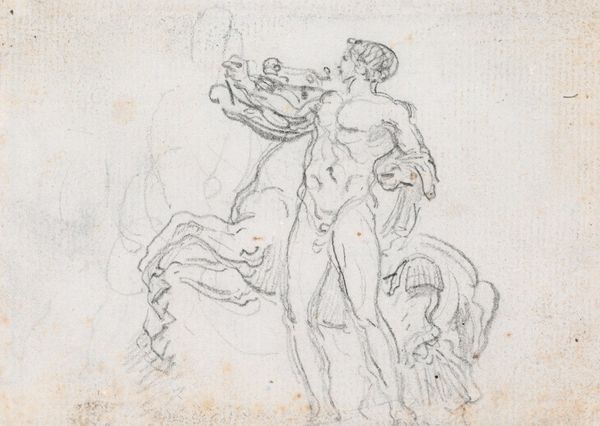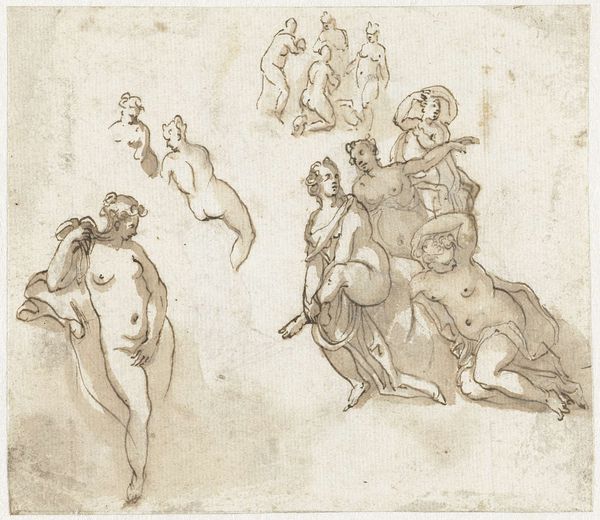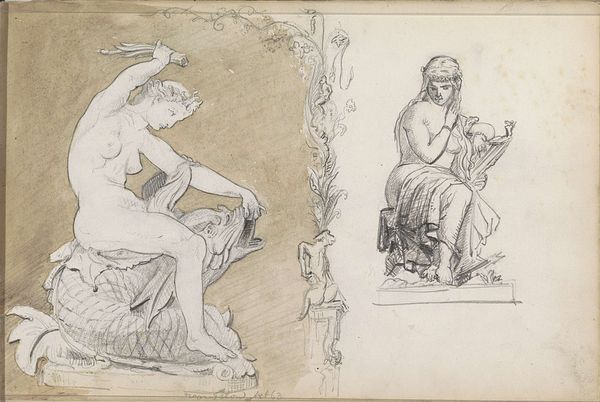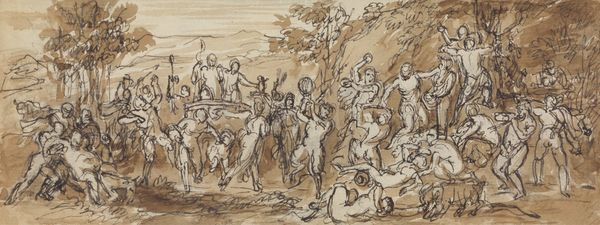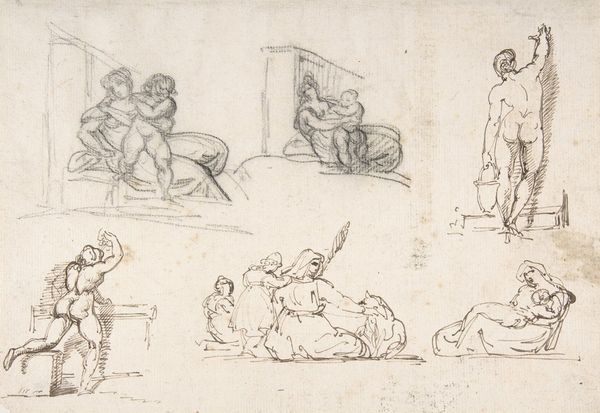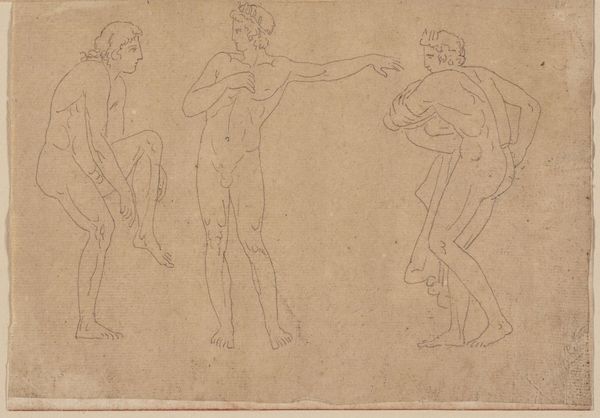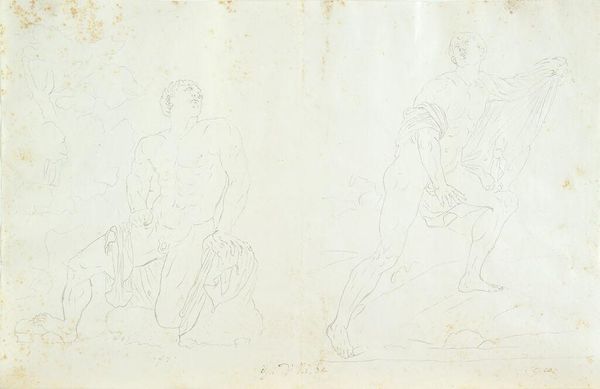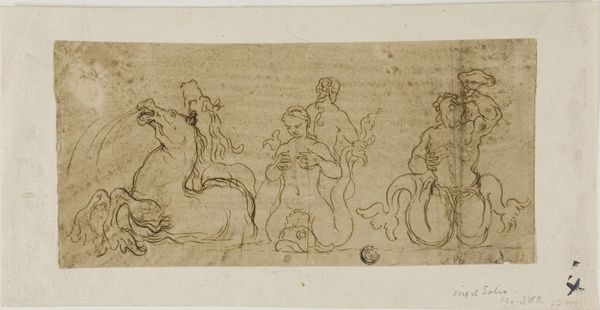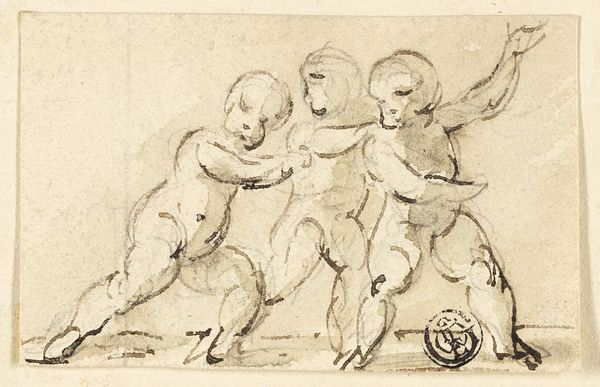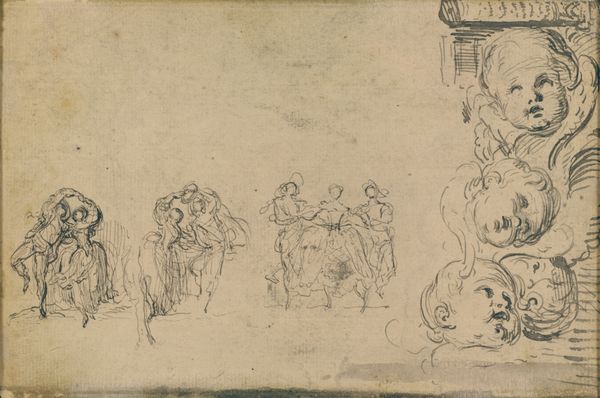
drawing, pencil
#
portrait
#
drawing
#
neoclacissism
#
pencil sketch
#
figuration
#
ancient-mediterranean
#
pencil
#
academic-art
Copyright: Public Domain: Artvee
Editor: Here we have "Two Studies of the Statue of Alexander and Bucephalus" by Hubert Robert, created sometime between 1754 and 1765, rendered in pencil. It strikes me as more of a preliminary exploration than a finished piece, with the lines so light and fluid. What can you tell me about it? Curator: It is interesting to consider the enduring appeal of Alexander, isn’t it? Even here, in what seems like a quick study, the artist invokes a cultural memory – Alexander as a symbol of youthful strength and heroic leadership. Robert's pencil seems to trace not just the contours of the statue, but also the echoes of Alexander’s legend. Does the repeated image change how you interpret the statue? Editor: Definitely. Seeing two versions makes me think about the artist's process, trying to capture the essence of Alexander from different angles. But why Alexander? Curator: Think about what Alexander represented during the Neoclassical period: reason, order, the heroic ideal. He was a figure from antiquity that aligned perfectly with the Enlightenment's aspirations. And Bucephalus, his horse, represented untamed nature brought under control by human will. The statue itself would have been a powerful symbol of those values. Do you see how Robert might be less interested in simply documenting the statue and more interested in channeling its symbolic weight? Editor: I think so. It's like he's trying to capture not just what the statue looks like, but what it *means*. It is interesting that the drawing feels so ephemeral, and yet the statue would have felt solid, representing everlasting ideas. Curator: Precisely. The fragility of the sketch underscores the continuous process of re-evaluating cultural memory. Each generation grapples with the legacies of the past and the artist gives us two chances to glimpse a legendary moment. Editor: I never thought of it that way. Now, looking at the sketch, I see it less as just a study and more as an attempt to engage with a powerful cultural icon and understand how it resonates through time.
Comments
No comments
Be the first to comment and join the conversation on the ultimate creative platform.
